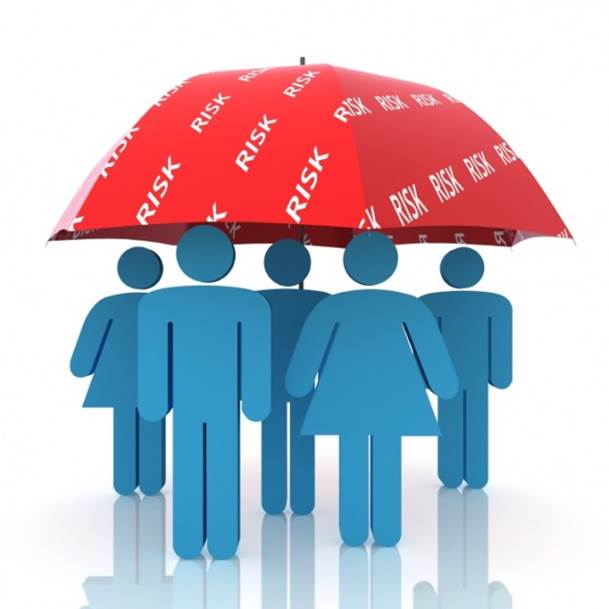As a retired psychotherapist who also had a
CPA practice, G. Moskowitz of Bedford Hills, N.Y., has a unique perspective on
what can happen when couples don’t’ share what they know. The widow of one
client realized she knew almost nothing about her spouse’s business when he
died, not even the name of his lawyer. “He died, and she was left saying, “what
do I do now?’” Moskowitz recalls.

Our
survey showed that in only 40 percent of households did both spouses know where
to find details of their financial accounts, required passwords, and keys to
safe-deposit boxes
Our survey showed that in only 40 percent
of households did both spouses know where to find details of their financial
accounts, required passwords, and keys to safe-deposit boxes. In only 30
percent of homes did both partners also share major details of the family’s finances?
The death of a spouse who controls the family money can leave survivors
struggling to construct the financial puzzle. An easy solution is to designate
a safe, file cabinet, or safe-deposit box to hold all important documents and
account access information.
Communication between generations also can
reduce hassles and misunderstandings. Yet just 37 percent of respondents with
adult children said they’d told their kids where to find important documents,
accounts, and passwords. Two-thirds of folks in their 70s said they’d had that
conversation, but a meager 35 percent of respondents in their 60s reported
doing so. Fewer than half of individuals with a parent 65 or older had
discussed with their parents their wishes regarding power of attorney, management
of finances in the case of incapacity, location of the parents’ important
documents, long-term-care arrangements, or provisions of the parents ‘wills.

Communication
between generations also can reduce hassles and misunderstandings.
Well-meaning adult children who inquire
about their parents’ finances risk being viewed as greedy for the inheritance,
and parents might refuse to share that information. But adult children stand a
better chance of gaining their parents’ trust and helping them make plans if
they get their own financial houses in order first. Then, Krooks says, “They
can sit down with their parents to say, ‘We’ve just done these ourselves to
make things easier for your grandchildren. What have you guys done, and what
can we do to help?’”
3. Botching your 401(k).
When we interviewed our subscribers who’ve
been successful savers and investors for our profile, a common refrain we heard
was to start saving early in life, invest consistently, and put the maximum
allowed into a retirement plan. “I contributed 6 percent of my salary to my
401(k), and then increased that to 10 and then 15 percent,” says retiree D.
Baeza, 60, of Coral Springs, Fla. “When I got a raise, half would go to our
lifestyle and the rest was put away.”
But in our survey, two-fifths of
respondents with 401(k) and similar retirement plans said they were investing 6
percent or less of their income, the typical ceiling for getting a full
employer match. Six percent had stopped contributing entirely. Less than a
third-29 percent- were maxing out their contributions.
 \
\
Two-fifths
of respondents with 401(k) and similar retirement plans said they were
investing 6 percent or less of their income, the typical ceiling for getting a
full employer match.
Ninety-one percent of survey respondents
said they didn’t review their funds’ fees and other expenses. That’s too bad. A
2010 study by Morningstar, the investment research company, showed that low
fees were the best predictor of a fund’s future performance. “The only thing
that I am absolutely sure about is that the lower the fee I pay to the purveyor
of the investment product, the more there will be for me,” says Burton Malkiel,
the renowned economics professor and author.
Fortunately, it’s easier than in the past
to compare funds’ expenses. As of last year, 401(k) plans are required to send
statements to investors outlining marketing and fund management fees. If, for
example, you’re investing in index funds- a strategy we strongly recommend- you
shouldn’t be spending more than $20 per $1000 invested, or about 0.2 percent,
on fees over all. Two good choices are the Schwab S&P 500 Index fund
(SWPPX), which charges expenses of just 0.09 percent, and the comparable
iShares Core S&P 500 ETF (IVV), with expenses of 0.07 percent.
Notably, a large percentage of respondents
to our Money Adviser survey mentioned costly investment errors, such as buying
or selling at the wrong time. Heeding Malkiel’s advice to invest at regular
intervals and hold over the long term- is the most surefire way to avoid those mistakes
and build wealth in a relatively risk-free way. “People invariably try to time
the market,” Malkiel notes. “They don’t’ put their investments on automatic
pilot. That just kills them.”
4. Underinsuring your home and your life.
When Hurricane Gustav blew two trees onto
the Baton Rouge, La., home of Denise Porter and Richard Hannon in 2008, the two
assumed their homeowners insurance would pay to replace the roof and repair two
damaged rooms. But their policy paid only the actual cash value of their property-that
is, the replacement cost of the property minus depreciation. And they faced
repair bulls in the (tens of thousands,” Porter estimates. To economize, they’d
also failed to get policy features that would cover the cost of bringing the
home up to new building standards and provide for inflation in the cost of
materials. “We were shortchanging ourselves,” Porter admits.
Only 36 percent of homeowners told us
they’d purchased replacement-cost cover age, a more expensive homeowner
insurance that provides replacement of your home with like kind and quality
materials. And only 20 percent have umbrella coverage against liability claims.

Build
up your emergency fund a bit at a time, say, $20 a week.
Since settling their claim, the couple sold
that property and bought a new home nearby. Now their homeowner’s policy
includes coverage for inflation protection and to rebuild up to code. To reduce
their premium, they’ve raised the deductible to $1,000 per incident from $500.
They have a separate, state-sponsored wind and hail policy, with a deductible
of 2 percent of the home’s insured value when the loss is caused by a
hurricane.
The couple also bought federal flood
insurance, at about $350 a year, though their home is not considered to be in a
flood-prone area. The Federal Emergency Management Agency estimates that more
than 20 percent of all flood claims arise outside of high-risk areas.
Two other coverage that should not be
overlooked are life and disability insurance. Term life insurance is more
economical than other types. Planner Losey says working parents of young
children should buy at least 10 times, their incomes, but he and planner
Blayney recommend talking to a certified financial planner for a more
sophisticated estimate. Use an online broker such as Accuquote, Select Quote,
FindMy-Insurance, or LifeInsure.com compare premium quotes.

Two
other coverage that should not be overlooked are life and disability insurance
Your income is your most important asset,
but injury or illness could put it at risk. So if your employer offers
supplemental long-term group disability insurance, buy it. A supplemental group
policy that raises coverage to 70 percent of income from 40 percent could cost
you on average $150 to $200 a year, says the Council for Disability Awareness,
an industry group.
By
the numbers:
1 in 7 the proportion of survey respondents
who said they’d lent $500 or more to a family member or friend within the
previous 12 months. Our advice: Even relatives should sign an agreement with
the loan’s terms.